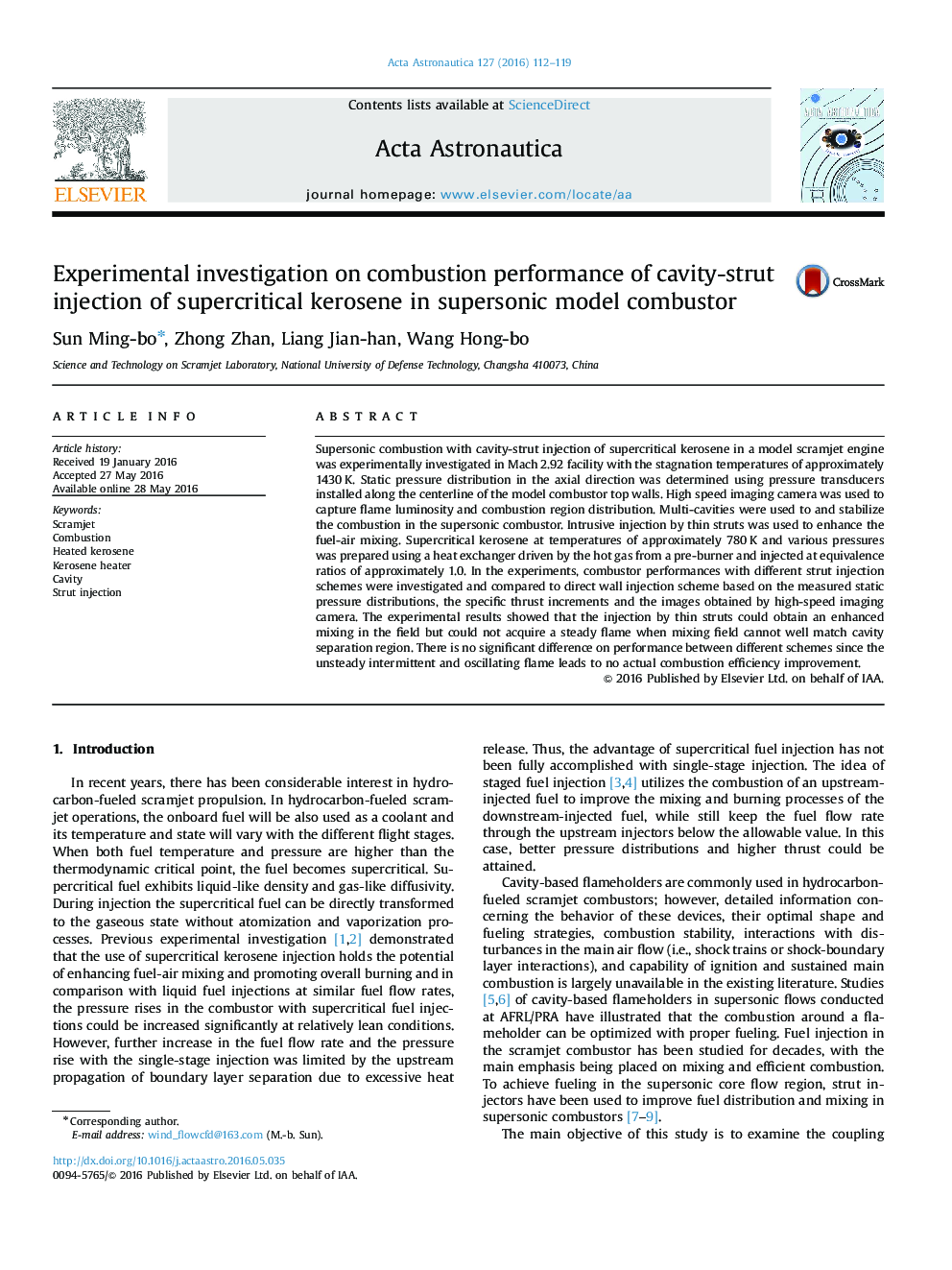| Article ID | Journal | Published Year | Pages | File Type |
|---|---|---|---|---|
| 8056003 | Acta Astronautica | 2016 | 8 Pages |
Abstract
Supersonic combustion with cavity-strut injection of supercritical kerosene in a model scramjet engine was experimentally investigated in Mach 2.92 facility with the stagnation temperatures of approximately 1430Â K. Static pressure distribution in the axial direction was determined using pressure transducers installed along the centerline of the model combustor top walls. High speed imaging camera was used to capture flame luminosity and combustion region distribution. Multi-cavities were used to and stabilize the combustion in the supersonic combustor. Intrusive injection by thin struts was used to enhance the fuel-air mixing. Supercritical kerosene at temperatures of approximately 780Â K and various pressures was prepared using a heat exchanger driven by the hot gas from a pre-burner and injected at equivalence ratios of approximately 1.0. In the experiments, combustor performances with different strut injection schemes were investigated and compared to direct wall injection scheme based on the measured static pressure distributions, the specific thrust increments and the images obtained by high-speed imaging camera. The experimental results showed that the injection by thin struts could obtain an enhanced mixing in the field but could not acquire a steady flame when mixing field cannot well match cavity separation region. There is no significant difference on performance between different schemes since the unsteady intermittent and oscillating flame leads to no actual combustion efficiency improvement.
Keywords
Related Topics
Physical Sciences and Engineering
Engineering
Aerospace Engineering
Authors
Sun Ming-bo, Zhong Zhan, Liang Jian-han, Wang Hong-bo,
